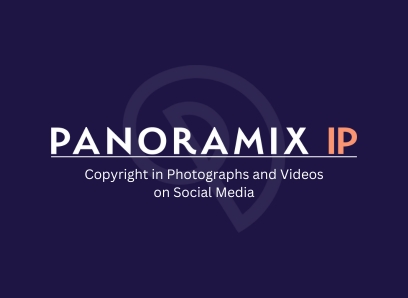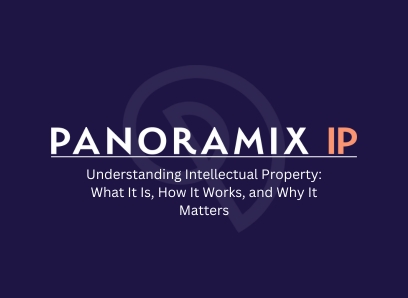Copyright is a form of legal protection that automatically covers many types of creative works, including photographs and videos. This protection exists even on social media platforms, where users share images and clips daily.
Although social media might feel like a free-for-all environment, copyright law still applies whenever original content is posted. Many people do not realise that by merely uploading a photo or video they took, they are (in most jurisdictions) automatically the copyright owner of that piece of work. Often, others are largely uncertain about what happens to their rights after they click “post”, or whether they can safely reuse images found online. This confusion often leads to unintentional infringements, misunderstandings about user agreements, and threats of legal action that can be daunting and expensive to resolve.
This blog will explain what copyright is, how it applies to photographs and videos shared on social media, and what happens if you receive a complaint or demand letter. It aims to clarify ownership issues, social media platform rules, and the concept of infringing or lawfully reusing images and clips. Whether you are a personal user posting holiday snaps or a business relying on social media for marketing, understanding these principles can protect you from significant legal trouble and help you manage your online content more effectively.
Copyright law, particularly in the United Kingdom, recognises anyone who creates an original work as the copyright owner, from the moment the work is “fixed” in a tangible form. If you take a photograph on your camera or phone, that act of creation generally grants you immediate ownership of the copyright. The same principle applies if you record a video: the second you capture it, you have created something that copyright law protects. You do not need to apply for any official certificate; in most cases, copyright arises automatically.
Too often, confusion occurs when someone else appears in a photo or video, or if it is captured in a public space. Even then, the creator usually holds copyright unless another agreement exists (for instance, an employment contract stating that the employer owns work produced by employees). However, there may be other legal considerations to keep in mind, such as rights of privacy, data protection, or personal image rights in certain jurisdictions. Copyright itself is generally focused on the work’s authorship rather than the content’s subject.
When social media is involved, most platforms request broad licences from users as part of their terms and conditions. When you sign up for an account and share original content, you typically grant the platform a licence to use, distribute, and sometimes modify or sub-licence your images or videos as necessary to operate the platform. This does not mean you have given up your copyright. Instead, you have given the platform permission to perform specific actions, like displaying the content to other users or including it in promotional materials.
It is important to read the fine print because these licences can be “worldwide” and “royalty-free,” meaning you will not receive payment even if the platform benefits from using your content in certain ways. In many cases, these rights are non-exclusive, so you remain free to license or sell your work to other parties if you wish. Some platforms also allow you to adjust your privacy settings or licensing preferences, though the default user agreement frequently includes these extensive permissions. If you do not want your photographs or videos used beyond your own profile, you will need to learn the platform’s settings or potentially consider a different sharing method that does not require granting such expansive rights.
When it comes to posting someone else’s work, in general, you cannot claim copyright over someone else’s photo or video, even if you posted it to your personal page. If you upload a friend’s photograph of you, your friend typically retains ownership unless they formally transferred it to you in writing. In many everyday situations, the photographer might not mind you posting it, but from a strictly legal perspective, permission should be obtained. It becomes more complicated if you are using a professional’s work, such as an event photographer’s images. They might have standard arrangements or licensing terms that either limit your ability to repost or require a fee.
If you post content that you did not create and do not have permission to upload, you risk infringing copyright. Some users assume that because content appears freely on social media, it is free to use however they see fit. That is not accurate. Copyright law continues to apply, and the fact that an image or video is visible does not grant you the right to copy or distribute it. When in doubt, it is usually better to request the owner’s permission or share the original post using the built-in “share” or “repost” functionality (which usually includes a link to or credit for the creator) instead of downloading and re-uploading.
Resharing or reposting content typically does not break copyright rules if you use the social media platform’s own share button. When you do this, the original poster’s identity is preserved, and you are effectively linking to their content rather than claiming it as your own. This method can be an excellent way for businesses or individuals to expand their reach, collaborate, and give credit where it is due. Resharing often includes the original user’s handle or name, which helps clarify ownership. It also ensures that any relevant attribution or disclaimers remain with the content, reducing the likelihood of disputes.
However, copying the image or video yourself, removing the creator’s details, and then reposting it as your own is not the same as resharing. In that scenario, you may well be infringing the creator’s copyright. If you do want to post it independently, you should receive explicit consent from the copyright holder and give suitable credit within the description or post caption.
The simplest way to avoid copyright issues is to create your own images and videos, but that is not always practical, especially for social media strategies involving curated content. If you wish to feature a photograph or video taken by another party, it is best to request written permission. Sometimes, creators license their works under open terms, such as Creative Commons licences, which specify how others may reuse their content. If the creator has designated the work as open to commercial use, you might be free to repost it, if you attribute it properly and meet the licence terms. If they have not, you need separate permission.
When it comes to major events or high-profile photography, you might have to pay a fee for usage rights. For instance, if you run a blog or business that features professional sports photography, you might need an arrangement with the photography agency that took the original imagery. In that situation, you would sign a contract allowing specific uses of the images under defined conditions. If you simply download them from a public social media profile without permission, the copyright holder may well issue a complaint or take legal action.
When looking at the use of content with an expired copyright or in the public domain, it’s worth noting that a relatively small portion of images and videos are in the public domain, meaning the copyright has expired or been otherwise relinquished. This typically occurs many decades after the creator’s death, according to local laws. In the UK, the duration of this copyright varies depending on the type of work. For written, musical, dramatic and artistic works, this lasts from the time of production plus 70 years after the death of the author.
Once works enter the public domain, you can use them freely for personal or commercial purposes. However, verifying that a photo or video is indeed in the public domain can be tricky. If you are uncertain, it is wiser to assume it is still protected and proceed accordingly. Some platforms or archives clearly mark whether an item is public domain. Others do not, leaving you with the responsibility of carrying out due diligence.
Once works enter the public domain, you can use them freely for personal or commercial purposes. However, verifying that a photo or video is indeed in the public domain can be tricky. If you are uncertain, it is wiser to assume it is still protected and proceed accordingly. Some platforms or archives clearly mark whether an item is public domain. Others do not, leaving you with the responsibility of carrying out due diligence.
When infringement is noted to occur, there is the possibility of a threat of legal action. Occasionally, individuals or businesses receive demands from copyright owners after posting or sharing content. These demands might include a cease-and-desist letter, a request for immediate removal of the post, or even claims for financial compensation. Some of these letters can be fraudulent or exaggerated, but many are legitimate. Taking them lightly can lead to serious repercussions, including lawsuits. If you find yourself in this position, it is wise to contact legal counsel, such as us at Panoramix IP, who can evaluate whether the copyright owner has a valid claim. They might check if the disputed image truly belongs to the claimant and whether you have engaged in “fair dealing” or any other permissible form of use under the law. Sometimes, the best resolution is to remove the content, while in other instances you might have a defensible position.
Copyright infringement is generally a civil matter in the United Kingdom, meaning the owner can sue for damages and possibly obtain an injunction to stop further infringement. However, in some cases where there is a wilful intent to profit from infringement, it can rise to the level of criminal liability. This is relatively rare for social media usage, but the possibility does exist if there is a large-scale or deliberate commercial exploitation of someone else’s content. Most everyday infringements remain in the civil realm, although they can still cost you or your company time and money to resolve. If you’re ever unsure, it’s always worth speaking with a legal professional at Panoramix IP for expert guidance.
If you or your business are ever accused of infringement, the first step is to review the claim calmly. Check whether you indeed used someone else’s photo or video without permission, or if you posted something that might be considered transformative or fair dealing. If you genuinely believe you have not violated their copyright, you can respond with evidence supporting your position. Legal advice is often advisable if the demands are significant or if a lawsuit has been threatened. In many situations, the matter can be settled by removing the content and negotiating a small fee if the usage was for commercial gain, but this is not guaranteed.
If the accusation stems from a misunderstanding, or if the creator is simply worried about losing potential revenue, a reasonable dialogue often resolves it without going to court. It’s always worth remembering that mediation is often a preferable option for finding a suitable resolution for both sides while saving potential expenses and time associated with progressing down the litigation route. The sooner you address the complaint, the more likely you are to prevent it from escalating. Attempting to ignore it could result in the matter growing more complex and costly. Remember also that a platform’s internal complaint system may come into play; if the complainant files a takedown request, your account might be affected in line with the platform’s policies.
If you’re looking to protect your own photos and videos and you regularly produce images or clips for commercial use, consider watermarking your content or including consistent branding to deter casual theft. Watermarks might not stop determined infringers, but they make unauthorised use more obvious. Monitoring is also key: you could periodically search for your images online, or use reverse image search tools, to see if they appear on third-party sites without your permission.
If you spot someone using your content in a way you have not authorised, you can send a polite letter or direct message explaining you own the copyright, and request they remove it or properly provide the credit if you are open to them keeping the post up. If they refuse, you can take the matter further, possibly involving the social media platform’s reporting mechanisms initially or progressing to legal action.
Social media thrives on sharing, but that sharing must be done within legal boundaries. Being overly cautious might limit your reach while ignoring copyright law could lead to claims or brand-damaging disputes. Ideally, you will strike a balance by respecting others’ works and ensuring you are credited when your own content is circulated. Clear communication with collaborators or models in your images can also address issues before they arise. If you are paying a professional photographer, check your contract to see whether you have the right to post the photographs or if additional fees apply for social media usage.
While initially, copyright in photographs and videos on social media may seem complex, it can become incredibly straightforward once you understand the basics. If you create the image or clip, you own the copyright (except in certain employment or contract scenarios), though you usually grant the platform a licence when you upload. Other people’s images remain protected, so using them without permission risks an infringement claim. There are exceptions, such as resharing through official platform tools, content that is genuinely in the public domain, or material offered under an open licence. Yet the safest route for commercial or large-scale usage is to secure explicit permission or pay for usage rights.
If you do run into trouble, or if you find your own photos being used without your approval, legal advice can help you navigate the complexities. Panoramix IP offers guidance on copyright and related IP issues, including the drafting of cease-and-desist letters, copyright disputes, evaluating claims made against you, and discussing how to protect your portfolio of creative works more effectively. By staying informed, you can make the most of social media’s collaborative potential without jeopardising your legal standing. If you wish to explore any of these matters further, get in touch with Panoramix IP, and one of our experts will be happy to discuss your needs in detail.






